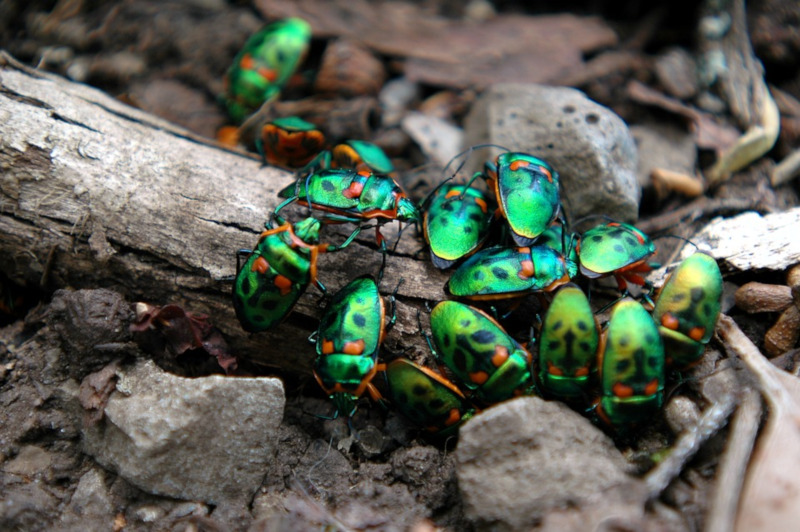
Christmas Beetle Facts
- Most notably, the wonderful Christmas Beetle represents another of those wonderful coincidences in Nature, due to certain characteristics of its life cycle. Furthermore, it ranks as a comparatively large species of beetle. This fabulous insect also classifies as a type of scarab beetle.
- The name principally derives from its tendency to gather in swarms in the greatest numbers at around the time of Christmas. But, the brilliant coloring of a few of the different species aided in this as well.
- However, the name does not apply to a single species. That’s because people apply the same common name to all members of a specific genus. Entomologists currently place a total of 35 species presently in that genus. Thankfully, none of these presently show on the IUCN Red List.
- In addition, the various species of insect known by the common name has a protracted period of activity. Although most active around the aforementioned time of year, it also appears throughout the summer as well, albeit in smaller numbers.
- Finally, these often display a great versatility in choice of habitat. That’s because many species inhabit both rural and urban areas indiscriminately. In both regions, observers report it to be a noisy and clumsy flier.
Related Articles
Christmas Beetle Physical Description
First of all, the term Christmas Beetle applies to a large number of separate species. Therefore, physical differences obviously exist between the various members of the group. However, certain basic physical characteristics exist throughout the genus.
Firstly, overall the various members of this amazing group rank as relatively large types of beetles. That holds true due to the fact that the separate species attain average maximum lengths that range from 0.79 – 1.2 in (20 – 30 mm). Yet, none of these arthropods display any noticeable degree of sexual dimorphism.
However, the different forms of Christmas Beetle do vary in terms of appearance. That’s because these display differing patterns of color. The majority of them present an overall color consisting of either dark or light brown. But, a few species display the dazzling shades of iridescent green or greenish-yellow that helped earned the genus its common name.
- Kingdom: Animalia
- Phylum: Arthropoda
- Class: Insecta
- Order: Coleoptera
- Family: Scarabaeidae
- Genus: Anoplognathus
Christmas Beetle Distribution, Habitat, and Ecology
Firstly, all of the different members of the genus collectively known as the Christmas Beetle all inhabit either of two regions. These two regions of the world consist of the continent of Australia, and the country of South Africa.
Furthermore, all of them live in the same general type of environment. The larvae of this arthropod live underground. These feed on decaying vegetation and various plant roots. Of these, it appears to prefer endemic grasses but will also feed on local lawns, pastures, and even crops.
At the height of its swarming, this can pose a significant threat to local farmers, as well as to the lawns of homeowners. The larvae of the Christmas Beetle, regardless of individual species, move to the surface in early spring and emerge as adults a few weeks later.
Typically, this mass emergence begins following the spring storms common to the local habitat. This softens the ground, making the emergence of the horde of insects easier. Among adults, the preferred food appears to be eucalyptus leaves.
Species Sharing Its Range
Check out our other articles on 8 Truly Monumental Orchids, Palos Verdes blue, Prohodna Cave, Great Hammerhead Shark, Maned Wolf, Yellow-Eyed Penguin, Olive Ridley Sea Turtle
